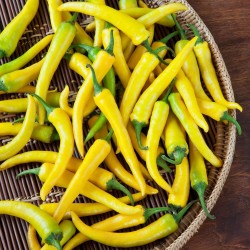Menu
-
MenuBack
- Home
-
Categories
-
-
Categories
-
Vegetable Seeds
-
Varieties by Country
- Varieties from Armenia
- Varieties from BiH
- Varieties from Croatia
- Varieties from France
- Varieties from Germany
- Varieties from Greece
- Varieties from Hungary
- Varieties from India
- Varieties from Italy
- Varieties from Japan
- Varieties from North Macedonia
- Varieties from Peru
- Varieties from Russia
- Varieties from Serbia
- Varieties from Slovenia
- Varieties from Spain
- Varieties from Thailand
- Varieties from Turkey
- Varieties from USA
- Tomato Seeds
- Corn Seeds
- Gourd family
- Bean family
- Cucumber Seeds
- Pepper Seeds
- Carrot family
- Onion family
- Lettuce Seeds
- Potato family
- Cabbage family
- Radish Seeds
- Beetroot family
- Watermelon Seeds
- Melon Seeds
- Cauliflower Seeds
- Sunflower family
-
Varieties by Country
- Fruit Seeds
- Chili - Habanero Seeds
- Medicinal Herb Seeds
- Climbing Plants Seeds
- Trees Bonsai Seeds
- Palm Seeds
- Ornamental Grasses Seeds
- Tobacco Seeds
-
Vegetable Seeds
-
-
-
-
- NEW PRODUCTS
- Create account
- Delivery - Payment
- FAQ
List of products by brand Seeds Gallery
Seeds produced by Seeds Gallery
Seeds produced by Seeds Gallery
There are 408 products.
Showing 313-324 of 408 item(s)

Variety from Serbia

Variety from Serbia
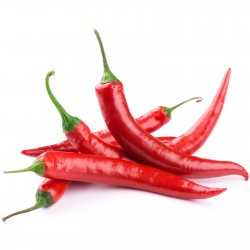
Serbian hot chilli Crvena...
Price
€2.85
SKU: C 12 CF (1g)
Seeds Gallery Com,
5/
5
<!DOCTYPE html>
<html>
<head>
<meta http-equiv="Content-Type" content="text/html; charset=UTF-8" />
</head>
<body>
<h2><strong><span style="font-size: 16pt;">Serbian hot chilli "Crvena feferona"</span></strong></h2>
<h2><span style="color: #ff0000;"><strong><span style="font-size: 16pt;">Price for package of 170+- (1g) seeds.</span></strong></span></h2>
<p><span style="font-size: 11pt;">Our "Crvena feferona" chili , originally from Serbia, is a beautiful variety which is very suitable for drying. It does not lose its bright red color after drying. It is interesting that in Serbia, the chili culture is widespread.</span></p>
<p><span style="font-size: 11pt;">It can be grown in a pot, but the most productive plants are grown outdoors.</span></p>
</body>
</html>
C 12 CF (1g)


Variety from Serbia
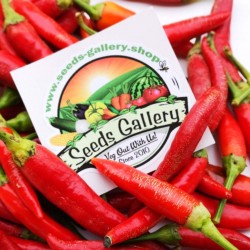
Serbian Mini VEZANKA Chili...
Price
€1.95
SKU: C 68
Seeds Gallery Com,
5/
5
<h2><strong>Serbian Mini VEZANKA Chili Seeds</strong></h2>
<h2><span style="color:#ff0000;"><strong>Price for Package of 20 seeds.</strong></span></h2>
<p>Almost the same like normal Vezanka but with much more SHU (about 200.000 to 350.000) and smaller (about 3 to 10 cm long). The pods have prominent, horizontal tan lines, also known as corking, and these lines create a leathery texture.</p>
<p>The skin matures from green to red and is very thin. It is ideal for drying, canning, and fresh consumption.</p>
<p>Plants are high yield and have a height from about 70 cm. It can be grown in a pot and open field.</p>
C 68


Variety from Serbia

Variety from Serbia
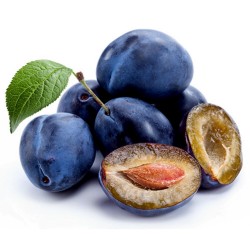
Serbian Plum Seeds (Prunus...
Price
€1.95
SKU: V 197 (15g)
Seeds Gallery Com,
5/
5
<h2 class=""><strong>Serbian Plum Seeds (Prunus domestica)</strong></h2>
<h2><span style="color: #ff0000;"><strong>Price for Package of 10 (15g) seeds.</strong></span></h2>
<p>A plum is a fruit of the subgenus Prunus of the genus Prunus. The subgenus is distinguished from other subgenera (peaches, cherries, bird cherries, etc.) in the shoots having terminal bud and solitary side buds (not clustered), the flowers in groups of one to five together on short stems, and the fruit having a groove running down one side and a smooth stone (or pit).</p>
<p>Mature plum fruit may have a dusty-white waxy coating that gives them a glaucous appearance. This is an epicuticular wax coating and is known as "wax bloom". Dried plum fruits are called dried plums or prunes, although, in American English, prunes are a distinct type of plum, and may have pre-dated the fruits now commonly known as plums.</p>
<p>Typically it forms a large shrub or a small tree. It may be somewhat thorny, with white blossom, borne in early spring. The oval or spherical fruit varies in size, but can be up to 8 cm across, and is usually sweet (dessert plum), though some varieties are sour and require cooking with sugar to make them palatable. Like all Prunus fruits, it contains a single large seed, usually called a stone, which is discarded when eating.</p>
<p>Plums are grown commercially in orchards, but modern rootstocks, together with self-fertile strains, training and pruning methods, allow single plums to be grown in relatively small spaces. Their early flowering and fruiting means that they require a sheltered spot away from frosts and cold winds.</p>
<p><strong>Cultivation and uses</strong></p>
<p>The taste of the plum fruit ranges from sweet to tart; the skin itself may be particularly tart. It is juicy and can be eaten fresh or used in jam-making or other recipes. Plum juice can be fermented into plum wine. In central England, a cider-like alcoholic beverage known as plum jerkum is made from plums.</p>
<p>Dried plums (or prunes) are also sweet and juicy and contain several antioxidants. Plums and prunes are known for their laxative effect. This effect has been attributed to various compounds present in the fruits, such as dietary fiber, sorbitol,[7] and isatin.[8] Prunes and prune juice are often used to help regulate the functioning of the digestive system. Dried prune marketers in the US have, in recent years, begun marketing their product as "dried plums". This is due to "prune" having negative connotations connected with elderly people suffering from constipation.</p>
<p>Dried, salted plums are used as a snack, sometimes known as saladito or salao. Various flavors of dried plum are available at Chinese grocers and specialty stores worldwide. They tend to be much drier than the standard prune. Cream, ginseng, spicy, and salty are among the common varieties. Licorice is generally used to intensify the flavor of these plums and is used to make salty plum drinks and toppings for shaved ice or baobing.</p>
<p>Pickled plums are another type of preserve available in Asia and international specialty stores. The Japanese variety, called umeboshi, is often used for rice balls, called onigiri or omusubi. The ume, from which umeboshi are made, is more closely related, however, to the apricot than to the plum.</p>
<p>As with many other members of the rose family, plum seeds contain cyanogenic glycosides, including amygdalin.[10] These substances are capable of decomposing into a sugar molecule and hydrogen cyanide gas. While plum seeds are not the most toxic within the rose family (the bitter almond is the most toxic[citation needed]), large doses of these chemicals from any source are hazardous to human health. On the other hand, plums are considered a source of phytochemical compounds with beneficial effects on health.</p>
<p>Prune kernel oil is made from the fleshy inner part of the pit of the plum.</p>
<p>Plums come in a wide variety of colours and sizes. Some are much firmer-fleshed than others, and some have yellow, white, green or red flesh, with equally varying skin colour.</p>
<p>Though not available commercially, the wood of plum trees is used by hobbyists and other private woodworkers for musical instruments, knife handles, inlays, and similar small projects.</p>
<p>When it flowers in the early spring, a plum tree will be covered in blossoms, and in a good year approximately 50% of the flowers will be pollinated and become plums. Flowering starts after 80 growing degree days.</p>
<p>If the weather is too dry, the plums will not develop past a certain stage, but will fall from the tree while still tiny, green buds, and if it is unseasonably wet or if the plums are not harvested as soon as they are ripe, the fruit may develop a fungal condition called brown rot. Brown rot is not toxic, and very small affected areas can be cut out of the fruit, but unless the rot is caught immediately, the fruit will no longer be edible. Plum is used as a food plant by the larvae of some Lepidoptera, including November moth, willow beauty and short-cloaked moth.</p>
<p><strong>The Serbian plum (Serbian: шљива / šljiva) is the third most produced in the world. In the Balkans, plum is converted into an alcoholic drink named slivovitz (plum brandy) (Serbian: шљивовица / šljivovica).</strong></p>
<p>A large number of plums, of the Damson variety, are also grown in Hungary, where they are called szilva and are used to make lekvar (a plum paste jam), palinka (traditional fruit brandy), plum dumplings, and other foods. The region of Szabolcs-Szatmár, in the northeastern part of the country near the borders with Ukraine and Romania, is a major producer of plums.</p>
<p>The plum blossom or meihua (Chinese: 梅花; pinyin: méihuā), along with the peony, are considered traditional floral emblems of China.</p>
<p>The plum is commonly used in China, Yunnan area, to produce a local plum wine with a smooth, sweet, fruity taste and approximately 12% alcohol by volume.</p>
<p> </p>
<script src="//cdn.public.n1ed.com/G3OMDFLT/widgets.js"></script>
V 197 (15g)

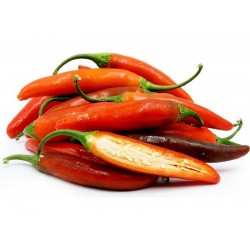
Serrano Chilli Seeds...
Price
€1.75
SKU: C 50
Seeds Gallery Com,
5/
5
<h2><strong>Serrano Chilli Seeds</strong></h2>
<h2><span style="color:#ff0000;"><strong>Price for Package of 10 seeds.</strong></span></h2>
<p>This is traditional Mexican salsa chilli; they look like slender Jalapenos but are a little hotter. The fruits grow on an upright, hairy and woody-stemmed plant that is hardier than most chilli varieties, making it a good choice for overwintering. The abundant fruits are up to 9cm long and reach full size in 75 days from potting on. The variety we sell produces longer fruits than the typical Serrano. Perfect for a greenhouse bed.</p>
<p>Heat: 10,000 Scoville heat units</p>
C 50

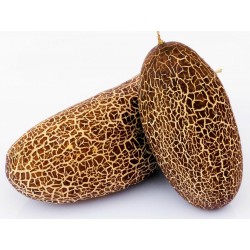
Sikkim Cucumber Seeds
Price
€1.55
SKU: PK 18
Seeds Gallery Com,
5/
5
<h2><strong>''Sikkim'' Cucumber Seeds Organically Grown</strong></h2>
<h2><span style="color: #ff0000;"><strong>Price for Package of 5 or 10 seeds</strong><strong><br></strong></span></h2>
<p>The historic cucumber. Fat, large fruit can reach several pounds in size. The ripe fruit is a unique rusty red color and is good eaten cooked or raw. In Asia, cucumbers are often stir-fried and are quite tasty. This variety is grown in the Himalayas of Sikkim and Nepal. Sir Joseph Hooker first discovered it in the eastern Himalayas in 1848. Here is part of what he wrote about it: “So abundant were the fruits, that for days together I saw gnawed fruits lying by the natives’ paths by the thousands, and every man, woman, and the child seemed engaged throughout the day in devouring them.” </p>
<p><strong>Extremely early, 45-50 days.</strong></p>
<p><strong>FRESH SEEDS.</strong></p>
<p>It does well in containers 5 gallons and up (the key to growing in containers is simple, regular watering and feeding). Northern zones direct sow mid-June. It can be started earlier indoors, be especially careful with the roots when transplanting. Stake string up or trellis will also grow well without support. Pick fruit regularly to increase production. One of the most unusual treats is emerging as possibly the best tasting cucumber of all in many opinions. Good eating even when they look over-ripe. Gets rave reviews on taste and productivity.</p><script src="//cdn.public.n1ed.com/G3OMDFLT/widgets.js"></script>
PK 18 (5 S)

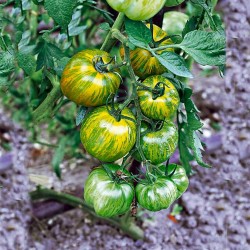
Smarald tomato seeds
Price
€2.25
SKU: VT 97
Seeds Gallery Com,
5/
5
<!DOCTYPE html>
<html>
<head>
<meta http-equiv="Content-Type" content="text/html; charset=UTF-8" />
</head>
<body>
<h2><strong>Smarald tomato seeds</strong></h2>
<h2><span style="color: #ff0000;"><strong>Price for Package of 10 seeds.</strong></span></h2>
<p>In our opinion, Smarald tomato is definitely an ornament in every garden. It's beautifully round fruits reach a weight of 150 to 200 grams on average. The fruits are light green in color, streaked with dark green when they are not ripe, as the fruits ripen they turn yellow and are streaked with dark green. The fruits have a pleasantly sweet and tonic taste.</p>
<p>The plants are strong, indeterminate, and reach an average height between 150 and 200 centimeters.</p>
<p>Great variety for fresh use, salads, sandwiches as well as for cooking.</p>
</body>
</html>
VT 97 (10 S)


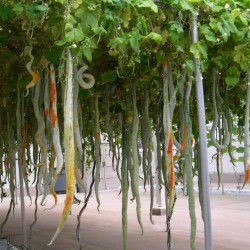
SNAKE GOURD Seeds...
Price
€2.35
SKU: VG 11
Seeds Gallery Com,
5/
5
<h2><strong>SNAKE GOURD Seeds (Trichosanthes cucumerina)</strong></h2>
<h2><span style="color:#ff0000;"><strong>Price for Package of 3 seeds.</strong></span></h2>
<p>Snake gourds are long and curved vegetables that fall into two different categories. There are the extremely long varieties that are grown for ornamental purposes and have hard skin and there are those grown for eating and medicinal purposes.</p>
<p>These Snake gourds have a waxy green skin and are often speckled or striped with a lighter shade of green. The fruit is eaten when young. Longer varieties are best harvested when they are between 16 and 18 inches long. Smaller varieties are best harvested at 6 to 8 inches in length.</p>
<p>When the gourd is young, the seeds are fairly nonexistent and the pulp around the seed mass is firm. The taste of a Snake gourd is similar to that of a cucumber. As a Snake gourd gets older, the rind gets hard and turns red. The taste becomes bitter and the insides gelatinous. The seeds are very hard and look similar to jagged-edged watermelon seeds. </p>
<p><strong>Seasons/Availability</strong><br />Snake gourds are available during the late summer and fall months. <strong></strong></p>
<p><strong>Current Facts</strong><br />Some of the longest gourds in the world are known as Snake gourd or ‘Serpent’ gourd. There are several varieties of Snake gourd that are cultivated and grown in India and other areas of the sub-tropics. These cucumber relatives can grow up to five or six feet long and when dried, can be made into a didgeridoo, an Australian Aboriginal wind instrument. Farmers tie stones to the ends of the fruit to weigh it down while it grows, to ensure straighter gourds. <strong></strong></p>
<p><strong>Applications</strong><br />Snake gourd can be prepared and used like zucchini; sautéed and served as a side dish or added to dishes with other sautéed vegetables. Snake gourds can also be stuffed or sliced and grilled. In Asian dishes, Snake gourd is made into chutneys and pickled. When the gourd is mature, the seed mass within is scraped out and used like tomato paste in various Indian dishes. <strong></strong></p>
<p><strong>Ethnic/Cultural Info</strong></p>
<p>In Ayurveda, the ancient medical system of India, the Snake gourd serves multiple purposes. Ingesting the fruit, leaves and flowers of the Snake gourd plant aided in digestive disorders, diabetes, skin diseases and general malaise. </p>
<p><strong>Geography/History</strong></p>
<p>Snake gourds are native to southeastern Asia, Australia and the islands of the Western Pacific. Originally domesticated in India, the serpent-like gourd can be found growing in Africa and other tropical and sub-tropical areas around the world. Botanically known as Trichosanthes cucumerina, Snake gourd seeds traveled from China to Europe via traders in the early 18th century, and were believed to have been planted at Monticello by Thomas Jefferson in 1820. </p>
<p> </p>
<h2>WIKIPEDIA:</h2>
<p>Trichosanthes cucumerina is a tropical or subtropical vine, its variety T. cucumerina var. anguina raised for its strikingly long fruit, in Asia eaten immature as a vegetable much like the summer squash, and in Africa, the reddish pulp of its mature fruit is used as an economical substitute of tomato.[2] Common names of the cultivated variety include snake gourd[note 1],[4] serpent gourd,[4] chichinda,[4] and padwal[4] (not to be confused with Trichosanthes dioica, the parwal, another gourd edible when immature).</p>
<p> </p>
<p>Trichosanthes cucumerina is found in the wild across much of South and Southeast Asia, including India, Bangladesh, Nepal, Pakistan, Sri Lanka, Indonesia, Malaysia, Myanmar (Burma), and southern China (Guangxi and Yunnan).[5] It is also regarded as native in northern Australia.[6][7] and naturalized in Florida,[8] parts of Africa and on various islands in the Indian and Pacific Oceans.[9]</p>
<p> </p>
<p>Formerly, the cultivated form was considered a distinct species, T. anguina, but it is now generally regarded as conspecific with the wild populations, as they freely interbreed:</p>
<p>Trichosanthes cucumerina var. anguina (L.) Haines – cultivated variant</p>
<p>Trichosanthes cucumerina var. cucumerina – wild variant</p>
<p> </p>
<p>Trichosanthes cucumerina is a monoecious annual vine climbing by means of tendrils. Leaves are palmately lobed, up to 25 cm long. Flowers are unisexual, white, opening at night, with long branching hairs on the margins of the petals. These hairs are curled up in the daytime when the flower is closed, but unfurl at night to form a delicate lacy display (see photos in gallery below). Fruits can be up to 200 cm long, deep red at maturity, hanging below the vine.</p>
<p>The related Japanese snake gourd (Trichosanthes pilosa, sometimes called T. ovigera or T. cucumeroides), very similar in vegetative morphology, but the fruit of T. pilosa is round to egg-shaped, only about 7 cm long.</p>
<p> </p>
<p><strong>Uses</strong></p>
<p>The common name "snake gourd" refers to the narrow, twisted, elongated fruit. The soft-skinned immature fruit can reach up to 150 cm (59 in) in length. Its soft, bland, somewhat mucilaginous flesh is similar to that of the luffa and the calabash. It is popular in the cuisines of South Asia and Southeast Asia and is now grown in some home gardens in Africa. With some cultivars, the immature fruit has an unpleasant odor and a slightly bitter taste, both of which disappear in cooking. The fruit becomes too bitter to eat as it reaches maturity, but it does contain a reddish pulp that is used in Africa as a substitute for tomatoes.</p>
<p>The shoots, tendrils, and leaves are also eaten as greens.</p>
<p> </p>
<p> </p>
VG 11 (3 S)

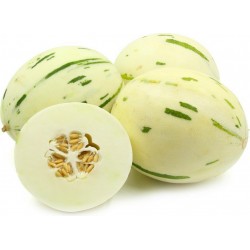
SNOW LEOPARD Melon Seeds -...
Price
€1.75
SKU: V 165
Seeds Gallery Com,
5/
5
<meta http-equiv="Content-Type" content="text/html; charset=UTF-8" />
<div id="idTab1" class="rte">
<h2><strong>SNOW LEOPARD Melon Seeds - VERY RARE</strong></h2>
<h2><span style="color: #ff0000;"><strong>Price for Package of 5 or 10 seeds.</strong></span></h2>
<p>Snow Leopard melon, very rare, exotic, sweet, delicious, beautiful, unique ...</p>
<p><strong>OTHER NAMES: IVORY GAYA MELON, SILVER STAR (SEREBRYANAYA ZVEZDA)...</strong></p>
<p><span>The Ivory Gaya melon has a unique variegated exterior, as the name suggests the base color of the skin is an ivory cream covered in small lime green speckles and streaks. A petite melon the Ivory Gaya has an oblong shape. Ivory Gaya melons have a thin outer rind, that when cut reveals a creamy white inner flesh. Toward the center of the melon the flesh is soft and juicy, the flesh closer to the skin of the Ivory Gaya melon will have a crisper texture. The Ivory Gaya offers a sweet flavor, with nuances of pear and honey. When ripe its blossom end will have a slight give and when at room temperature will offer a sweet and rich melon aroma. </span></p>
<p><strong>Seasons/Availability</strong></p>
<p><span>Ivory Gaya melons are available in the late spring and early summer months. </span></p>
<p><strong>Current Facts</strong></p>
<span>A member of the Cucurbitaceae or Cucurbit family the Ivory Gaya melon is of the muskmelon species and botanically known as Cucumis melo inodorus ‘Ivory Gaya’. Also known as the Snow Leopard melon the Ivory Gaya is often referred to as an "ice box" variety melon as a result of its petite size that easily fits in a crisper drawer. This honeydew cultivator is a specialty melon and sought after for its unique exterior coloring and sweet melon flavor. </span><br />
<p><strong>Applications</strong></p>
<span>Like many honeydew cultivator melons the Ivory Gaya has an exceptionally sweet flavored flesh that is ideal for fresh eating. Its petite size makes it perfect as a personal melon which can be halved and eaten as is for one. Pureed it can be used as a base for cold soups or sauces. Cubed it can be added to both fruit and green salads or used on fruit kebabs. Companion flavors include salty Italian meats such as salami and prosciutto, parmesan cheese, feta, balsamic vinegar, berries, grapes, tomato, olives and lime juice. Keep at room temperature until ripe. Uncut melons can be kept in the refrigerator for up to five days. Once sliced melon will keep best wrapped in plastic in the refrigerator and when used within three days. </span><br />
<p><strong>Geography/History</strong></p>
<span>The Ivory Gaya melon is native to Japan. In addition to Japan, today it can be found growing in China, Mexico, South America and in North America, specifically in southern California. A vining type the Ivory Gaya melon thrives in warm sunny conditions. Sill a rather unique variety melon in California the Ivory Gaya can be found at select Asian markets, farmers markets and specialty grocers. </span><br />
<div>
<div id="restaurantSlide"></div>
</div>
<p>Melons: <em>Cucumis melo</em><br />Watermelons: <em>Citrullus lanatus</em><br /><br />The sweet succulence of summer-ripe melons is irresistibly tempting, but the health benefits of these luscious fruits shouldn't be overlooked. Look to red-fleshed melons to fortify the heart and urinary tract. Yellow and orange flesh types provide support to the immune system, heart and vision. Green-fleshed varieties promote strong bones and teeth as well as vision health. We've selected varieties that are successful in both southern and northern gardens.<br /><br /><strong>CULTURE:</strong> All types of melons can be direct sown in warmer regions, but will yield a much better crop if started indoors about 3 weeks prior to your last frost. We recommend planting in raised beds covered with green, silver, or black plastic mulch. This method produces better yields.</p>
<p><br /><strong>FOR TRANSPLANTS:</strong></p>
<p>Fill 3-4 inch, individual pots with sterile seedling mix. Plant 2-3 seeds per pot. Thin the pots to the best single plant after the seedlings are well established. Grow the seedlings under dry, warm conditions until they develop at least 1 true leaf. Transfer to cold frame if you have one. Fertilize seedlings with a fertilizer such as 2-1-1 Earth Juice Grow (ZFE245). Transplant into the garden just before the plants become root bound and when the soil temperature is at least 60°F. Space transplants 3-4 feet apart in rows 5-6 feet apart. Apply 1/2 cup of our complete fertilizer dug in well around each plant.</p>
<p><br /><strong>TO DIRECT SOW:</strong></p>
<p>Soil temperature must be above 70°F for decent germination. Like most vine crops, melon and watermelon seeds require even moisture levels to prevent rotting. The soil should be moist to the touch. Space and fertilize as you would transplants. Watermelon seeds are less tolerant of cool conditions than cantaloupe. They are best adapted to the warmer, longer season areas of the US. In more difficult climates, the use of plastic mulch is highly recommended. Plastic mulches increase the soil temperature and air temperature close to the plants during the day, and using a floating row cover like Reemay or Gro-Therm can also increase your success. Monitor the temperature under the row covers on hot days especially early in the season.</p>
<p><br /><strong>DISEASES:</strong></p>
<p>Select disease-resistant melon varieties, as bacterial wilt and powdery mildew are common problems. Watermelons are subject to several wilts, and fungal and viral diseases. Most can be controlled with good soil management, proper rotation, garden sanitation, and by not using overhead watering methods.</p>
<p><br /><strong>INSECTS/PESTS:</strong></p>
<p>Control insects, especially cucumber beetles, with Pyrethrin or a floating row cover.</p>
<p><br /><strong>HARVEST:</strong></p>
<p>Cantaloupe will easily slip from the vine when ripe. With other melons, check the leaf where the fruit is attached to the vine. The fruit is mature when this leaf begins to yellow. Watermelons are ready for harvest when the tendril closest to the fruit is dry and brown or when the bottom side of the fruit is yellow. Melons and watermelons will not ripen off the vine. Pick in the cool of the day and chill quickly. Store melons at 35°F and 95% relative humidity. Store watermelons at 45°F and 85% relative humidity.</p>
<p><br /><strong>SEED SPECS:</strong></p>
<p>Minimum germination standard: 80%. Usual seed life: 3 years. Days to maturity: from date of transplanting. Add 10-15 days if direct seeding.</p>
</div>
V 165 (5 S)

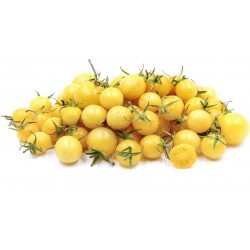
Snow White Cherry Tomato seeds
Price
€1.75
SKU: VT 14
Seeds Gallery Com,
5/
5
<h2><strong>Snow White Cherry Tomato seeds</strong></h2>
<h2><span style="color: #ff0000;"><strong>Price for Package of 10 seeds.</strong></span></h2>
<p>Snow White tomatoes are a medium-large sized variety of cherry tomato weighing approximately 20-30 grams (one to two ounces) per fruit. They ripen (in 80 days) from green to a pale yellow, and that ivory-cream color persists throughout the interior flesh. They are deliciously sweet and juicy without being sugary, and notes of citrus and pineapple balance their flavor. The compact indeterminate plants grow an average of four to 180 cm (six feet) tall and are highly productive throughout the season.</p>
<p>Snow White cherry tomatoes are a variety of Solanum lycopersicum in the Nightshade family. Tomatoes are categorized in subgroups that represent variations observed within the tomato species, referred to as their cultivar: a botanical term that is a contraction of the two-word term cultivated variety, and is equivalent to what growers simply call a “variety.” Therefore, Cherry tomato varieties are more specifically called Lycopersicon esculentum var. cerasiforme. Their pale color earned them their name, which is appropriately pure and sweet although they actually turn more of a creamy yellow color when fully mature. They offer far more of a concentrated tomato flavor than most other white varieties.</p>
<p><strong>Nutritional Value</strong><br />Tomatoes are rich in vitamin C, and they contain good amounts of vitamin B and vitamin A. They are a good source of iron and calcium, and also contain decent amounts of phosphorus, sulfur, and potassium.</p>
<p><strong>Applications</strong><br />Snow White cherry tomatoes are great for snacking or as an addition to fresh salads. They are sweet and delicious on their own, but can also be enhanced by fresh herbs and spices, such as basil, cilantro, chives, dill, garlic, mint, paprika, rosemary, oregano, parsley, thyme, and tarragon. Store tomatoes at room temperature until ripe, after which refrigeration can slow the process of decay.</p>
<p><strong>Ethnic/Cultural Info</strong><br />Cherry tomatoes were the first tomato species to be domesticated. They are descendants of the wild tomato, which traces back millions of years the coastal regions of South America. However, archeological evidence suggests that cherry tomatoes were first cultivated further north in Central America by the Aztecs and Incas as early as 700 AD. The tomato was introduced to Spain in the 16th century by the conquistadors and soon spread throughout Europe, however, it wasn’t until the mid-1800’s that the tomato became widespread in the United States.</p>
<p>Geography/History<br />The Snow White cherry tomato was developed by Joe Bratka, a famous tomato collector from New Jersey who has bred several other varieties including the popular isis candy cherry tomato. Tomatoes are warm-weather plants that are not at all hardy, as cold soil and air temperatures can stress plants. It is recommended that you wait at least a week or two after the last frost of the season before planting outdoors.</p>
VT 14 (10 S)

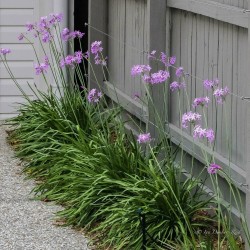
Society Garlic Seeds...
Price
€1.95
SKU: MHS 85
Seeds Gallery Com,
5/
5
<meta http-equiv="Content-Type" content="text/html; charset=UTF-8" />
<h2><strong>Society Garlic Seeds (Tulbaghia violacea)</strong></h2>
<h2><span style="color: #ff0000;"><strong>Price for a Package of 10 seeds.</strong></span></h2>
<p><i><b>Tulbaghia violacea</b></i>, also known as<span> </span><b>society garlic</b>, is a<span> </span>species<span> </span>of<span> </span>flowering plant<span> </span>in the<span> </span>family<span> </span>Amaryllidaceae,<span> </span>indigenous<span> </span>to southern Africa (KwaZulu-Natal<span> </span>and<span> </span>Cape Province), and reportedly naturalized in Tanzania and Mexico.<sup id="cite_ref-1" class="reference"></sup></p>
<p>Growing to 60 cm (24 in) tall by 25 cm (10 in) wide, it is a clump-forming<span> </span>perennial<span> </span>with narrow leaves and large clusters of fragrant, violet flowers from midsummer to autumn (fall).</p>
<h2><span class="mw-headline" id="Cultivation">Cultivation</span></h2>
<p>When grown as an ornamental, this plant requires some protection from winter frosts. This species<sup id="cite_ref-4" class="reference">[4]</sup><span> </span>and the<span> </span>cultivars<span> </span>‘Purple Eye’<sup id="cite_ref-5" class="reference">[5]</sup><span> </span>and ‘Silver Lace’, with cream-margined leaves,<sup id="cite_ref-6" class="reference">[6]</sup><span> </span>have all gained the<span> </span>Royal Horticultural Society’s<span> </span>Award of Garden Merit.<sup id="cite_ref-7" class="reference"></sup></p>
<h2><span class="mw-headline" id="Medicinal_uses">Medicinal uses</span></h2>
<p><i>Tulbaghia violacea</i><span> </span>is used locally as a herbal remedy/medicine to treat several ailments. Recently it was demonstrated to have<span> </span>androgenic<sup id="cite_ref-8" class="reference"></sup><span> </span>and anti-cancer<sup id="cite_ref-9" class="reference"></sup><span> </span>properties in vitro.</p>
<p><i>Tulbaghia violacea</i><span> </span>exhibited<span> </span>antithrombotic<span> </span>activities which were higher than those found in<span> </span>garlic.<sup id="cite_ref-10" class="reference"></sup></p>
<h2><span class="mw-headline" id="Odor">Odor</span></h2>
<p>It may smell like marijuana or skunk to those familiar with either smell.<sup id="cite_ref-11" class="reference"></sup><span> </span>There have been instances in which concerned neighbors have contacted the authorities about the smell of cannabis in the neighborhood only to find out that the culprit was actually lemon verbena or society garlic.</p>
MHS 85 (10 S)

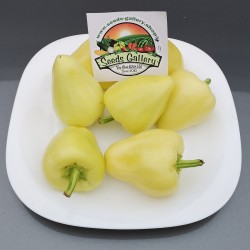
Somborka hot bell pepper seeds
Price
€1.85
SKU: PP 78
Seeds Gallery Com,
5/
5
<meta http-equiv="Content-Type" content="text/html; charset=UTF-8" />
<h2><strong>SOMBORKA hot bell pepper seeds - Serbian variety</strong></h2>
<h2><span style="color: #ff0000;"><strong>Price for Package of 20 or 200 (1,14 g) seeds.</strong></span></h2>
<p>This variety comes from Serbia. And the name has gotten to the city of <strong>Sombor</strong>. Read more about <strong><a href="https://en.wikipedia.org/wiki/Sombor" target="_blank" title="Read more about Sombor city here" rel="noreferrer noopener">Sombor</a><a href="https://en.wikipedia.org/wiki/Sombor" target="_blank" title="Read more about Sombor city here" rel="noreferrer noopener"> city here</a>.</strong></p>
<p>SOMBORKA is the earliest variety of hot paprika with a conical shape that is suitable for growing outdoors as well as in a greenhouse. Somborka is the most popular pepper in Serbia when it comes to pickling.</p>
<p>The meat is juicy and thick, light yellow in technical maturity, red in botanical color.</p>
<p>It is harvested 5-6 times a season. Possible yield is 35-40 t / ha.</p>
<p><span style="font-size: 10pt;"><strong>Serbian variety</strong></span></p>
PP 78 (20 S)


